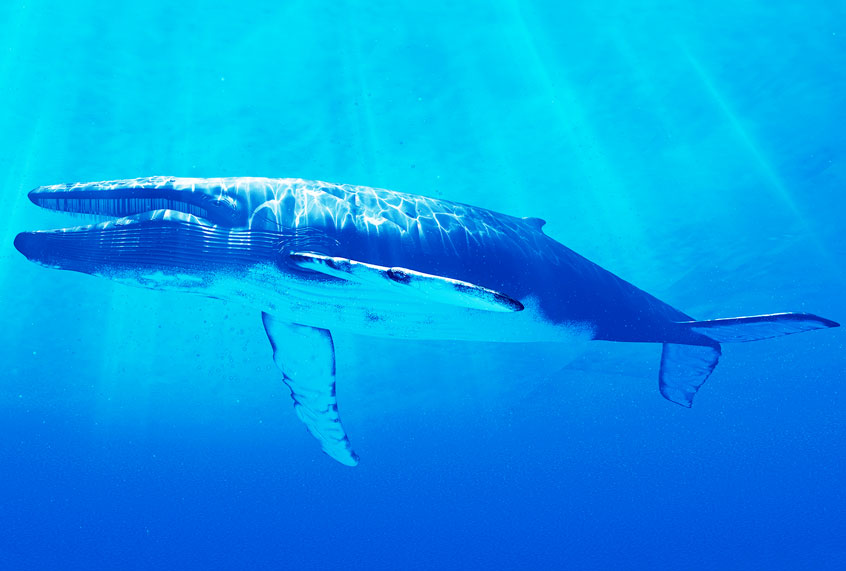A resting heart rate for an adult human is usually between 60 to 100 beats per minute, though that number varies greatly among other animals, as researchers have found that animal heart rates generally correlate to their body size. In general, smaller animals have faster heart rates, while bigger ones have hearts that beat slower. But the heart rate of the largest wild animals, particularly those that are impossible to keep in captivity, is mostly unknown. How slow could the largest living being’s heart beat?
According to a new paper published Nov. 25 in Proceedings of the National Academy of Sciences, researchers now know the heart rate of a blue whale, the largest animal ever known to exist on Earth (yes, larger than any dinosaur or Ice Age megafauna). After placing sensors from an electrocardiogram on a blue whale in the wild, which attached to the whale via suction cups, researchers the whale’s heart beat while it swam in the open ocean for nine hours.
“Animals that are operating at physiological extremes can help us understand biological limits to size,” Jeremy Goldbogen, assistant professor of biology in the School of Humanities and Sciences at Stanford and lead author of the paper, said in a media statement. “They may also be particularly susceptible to changes in their environment that could affect their food supply. Therefore, these studies may have important implications for the conservation and management of endangered species like blue whales.”
The data showed that when the whale dove, its heart rate slowed and reached an average minimum of about four to eight beats per minute. The lowest recorded heart beat was two beats per minute. As the blue whale foraged for food at the bottom of its dive, its heart rate increased about 2.5 times the minimum. According to the paper, this incredibly low heart rate allows the whale able to conserve its blood oxygen supply which helps it to stay underwater for prolonged periods of time. The highest heart rate researchers recorded was 37 beats per minute after the blue whale returned to the surface for air from a foraging mission and restored its oxygen levels.
What’s interesting is that this data could provide an answer as to why blue whales haven’t evolved to be bigger. According to the analysis, a blue whale’s heart is likely working at its limit.
The data surprised researchers: the whale’s resting heart rate while foraging nearly 600 feet below sea level was 30 to 50 times lower than expected. According to the paper, it is possible it operates like this because of an elastic-like part of the whale’s heart called an aortic arch which moves blood out to the body.
Blue whales have the largest heart of any animal; they can weigh more than 1,000 pounds and pump about 60 gallons of blood with each beat, according to The National Oceanic and Atmospheric Administration (NOAA). NOAA states that the current population of blue whales in the world is about 10,000 to 25,000 animals. Before whaling, there were an estimated 300,000 blue whales in our oceans.
There has been a lot of attention on whales lately in regards to these animals’ relationship with climate change. Recently, a team of economists at the International Monetary Fund (IMF) analyzed how whales help facilitate carbon absorption. During a whale’s average lifetime, it will sequester 33 tons of carbon dioxide. Comparatively, a tree absorbs up to 48 pounds of carbon dioxide each year.
“The carbon capture potential of whales is truly startling,” the economists wrote. “Our conservative estimates put the value of the average great whale, based on its various activities, at more than $2 million, and easily over $1 trillion for the current stock of great whales.”
If whales returned to their pre-whaling population of 4 to 5 million, from slightly more than 1.3 million today, it could significantly increase the amount of phytoplankton in the oceans and the carbon they capture as well.
Researchers working on the heartbeat study are looking forward to finding more ways they can learn about the blue whale’s heart during different activities.
“We’re always looking to push the boundaries of how we can learn about these animals,” David Cade, a co-author of the paper who attached the heart rate monitor on the whale, said in a media statement.

